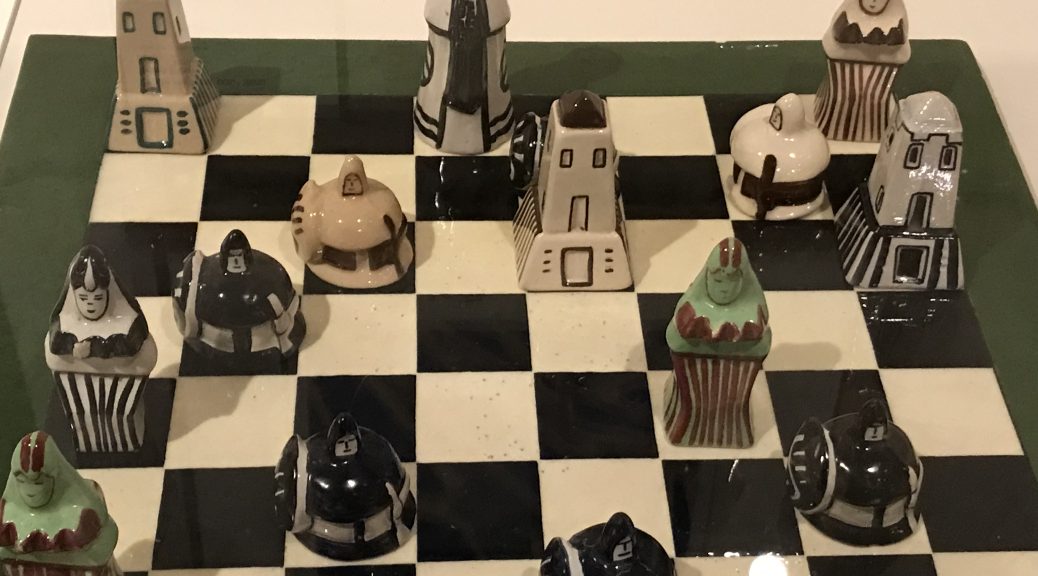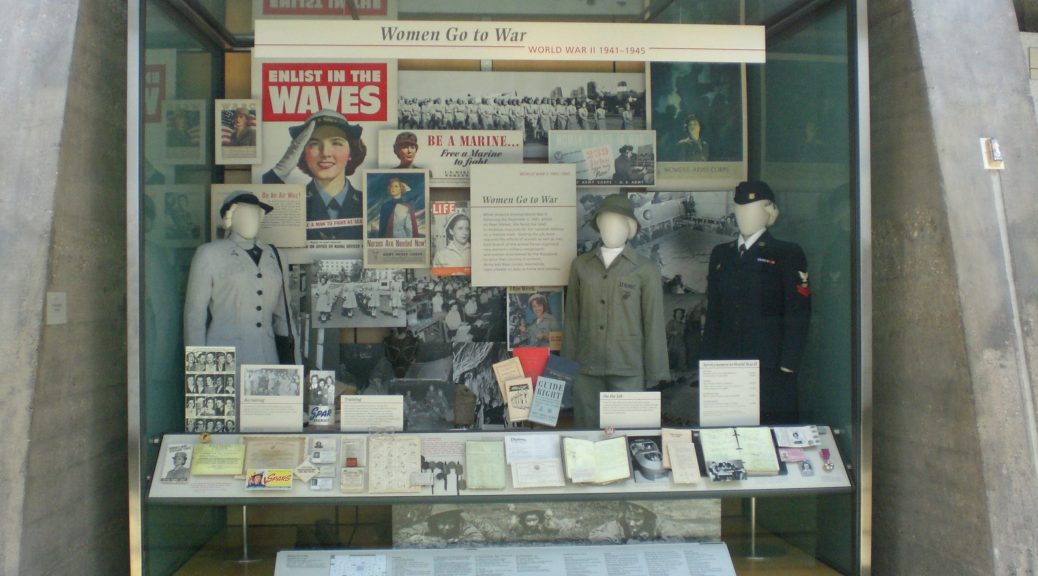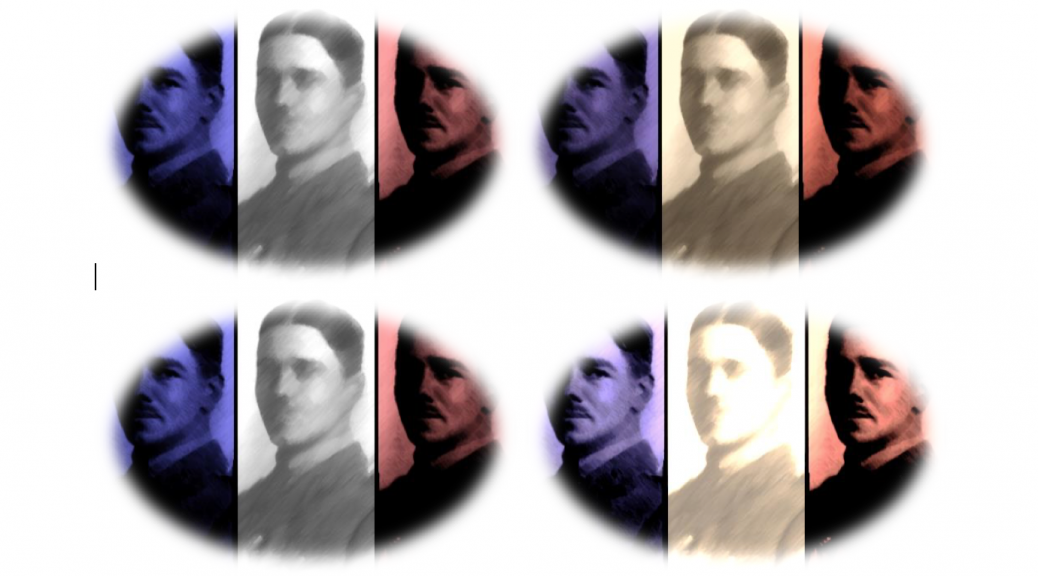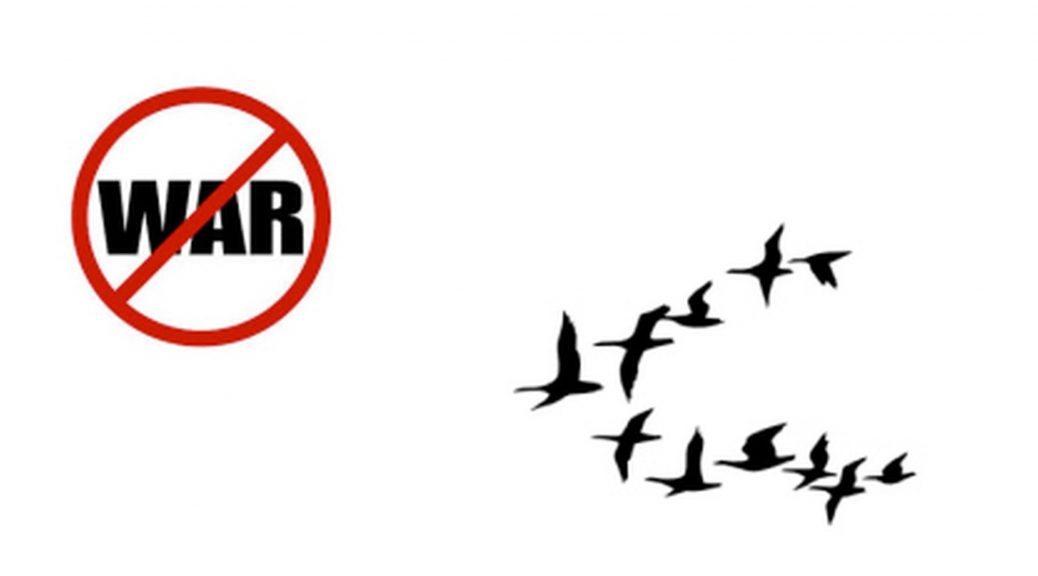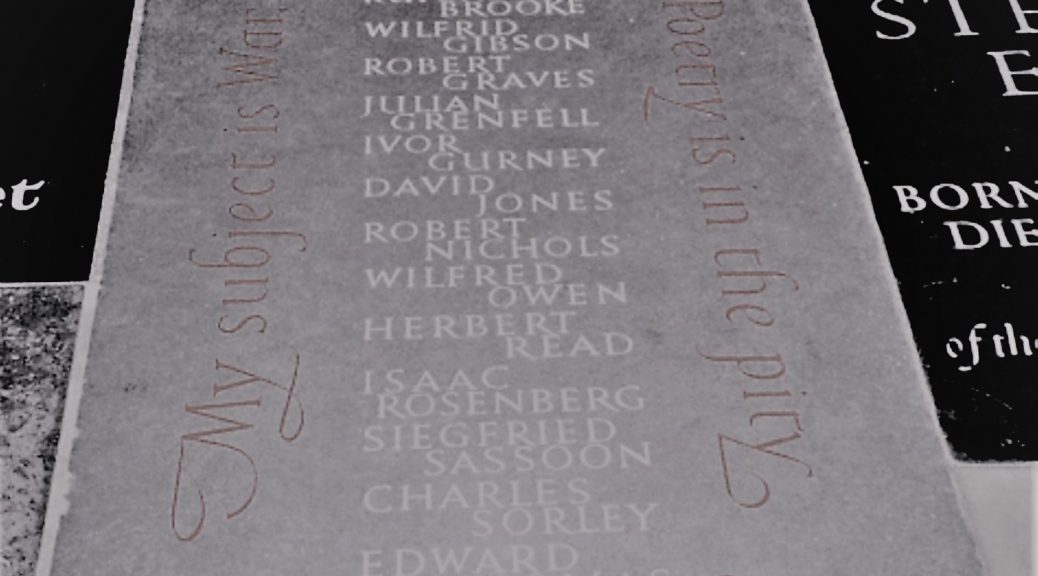I was neither at the hot gates
Nor fought in the warm rain
Nor knee deep in the salt marsh, heaving a cutlass,
Bitten by flies, fought[1].
As his old persona Gerontion acknowledged in 1920, T. S. Eliot did not fight in World War I which at its outbreak found him stranded in London, nor would he later fight in World War II because he was too old to be enlisted. As an American citizen at the time of the first war, he nevertheless tried – in vain – to enlist in the US Navy in the months leading to the Armistice despite his poor physical condition, which “had made active service impossible, though he felt sure that he had something to offer military intelligence[2]”.
He did not use his poetry either as a language weapon against the enemy or as a patriotic enhancement, or as a vector of hope as the French poets of the Résistance did during the years of Occupation in World War II,[3] and made his case about not doing so in “Poetry and Wartime.[4]” In this short piece broadcast on BBC Sweden in July 1942 as a reply to those who were wondering about the silence of “war poets,” Eliot first distinguishes between “patriotic poetry, poetry which expresses and stimulates pride in the military virtues of a people [and] asking poets to write poetry arising out of their experience of war.” About the former he reminds readers, “very little first-rate poetry of this kind there is in any language and how little of that has ever been written in the middle of a great war”. For that matter, he exemplifies Homer’s Iliad which was not written during the Trojan war and where the Greeks “appear rather more unpleasant than the Trojans.” And when “poetry of patriotic intensity can be inspired by the awareness of a foreign threat to native liberty or by sorrow at defeat or by indignation at oppression,” as in Tennyson’s “The Charge of the Light Brigade,” he remarks that “there is no first rate poem about the victory over the Armada or the Battle of Trafalgar.”
About the latter, that is, the poets expected to poetize their war experience, Eliot suggests that such an experience cannot be understood “with the kind of understanding needed for writing poetry (…) while you are in the midst of it, (…) and after it is likely to bear fruit in something very different from what during time of war people call ‘war poetry’.” That stated, Eliot distinguishes between the duty of the poet as a man and as a poet, the former being that of any citizen towards his country, the latter being “towards his native language, to preserve and to develop that language […] And the artist who will do the most in this way for his own people, will be the artist great enough, like Shakespeare, to give something precious not only to his own country but to the whole of Europe.[5]” The same could hold to the other side of the medal. In Eliot’s aesthetics, poetry isn’t an ‘art of peace’ either. One could even reverse his quip on “where are the war poets”: if the question has eventually vanished, it might be, Eliot suspects, “that those who asked [it] were not the sort of people who take an intelligent interest in poetry in time of peace.” And vice-versa, for very few people have ever wondered where the ‘peace poets’ are.
If there are poems by Eliot that encapsulate his reasoning, “Gerontion” would be one of them, with the poet suggesting “the impossibility of heroism[6]”, siding with those who were too old, feeble, wretched or disowned to take part in the violence and who mostly couldn’t but endure it. The Waste Land, whose 100th anniversary was celebrated last year, would certainly pertain to all three points made by the poet as far as “war poetry” is concerned: not written in the midst of the war, not dealing with patriotic emotion, nor with the war as such, but certainly reaching at preserving and developing his native language, and beyond, by giving ‘something precious not only to his own country but to the whole of Europe’: a dramatic, polyphonic, ironic, aching verbal picture of a fractured conscience, a dismantled continent and a ruined culture. The same could be said of Four Quartets, Eliot’s poetic testament in the form of a long and ample meditation on language and the use of poetry, dealing incidentally with World War II.
Deeply embedded in his verse, from his visible foreign quotes in ‘’The Waste Land” to his hidden ones in the four “Quartets”, and in his philologic struggle with language throughout his poetic career, lies Eliot’s interest in having his poems translated in foreign languages. Or, to paraphrase and quote Walter Benjamin, it would rather be Eliot’s poems that are calling for translation:
“Translation is a mode. In order to grasp it as such, we have to go back to the original. For in it lies translation’s law, decreed as the original’s translatability. […] if translation is a mode, then translatability must be essential to certain works. […] Translations that are more than transmissions of a message are produced when a work, in its continuing life, has reached the age of its fame. (…) In them the original’s life achieves its constantly renewed, latest and most comprehensive unfolding[7].”
And maybe Eliot would have intuitively agreed with Benjamin:
“Poetry is a constant reminder of all the things that can only be said in one language and are untranslatable. […] But I have also found sometimes that a piece of poetry, which I could not translate, containing many words unfamiliar to me, and sentences which I could not construe, conveyed something immediate and vivid, which was unique, different from anything in English – something which I could not put into words and yet felt that I understood. […] So in poetry you can, now and then, penetrate into another country, so to speak, before your passport has been issued or your ticket taken[8].”
Thus, it is to this voyage – passports and tickets free – into T. S. Eliot’s language and its translations in other tribes’ idioms, that we invite Arts of War and Peace readers by means of this collection of essays originally prompted by an International Conference held in Paris in October 13-14th, 2022, as part of the “The Waste Land” anniversary celebrations, to assess whether Eliot’s poetic œuvre has “reached the stage of their continuing life [Fortleben]”[9].
“Gerontion” is also the starting point of Chloé Thomas’ quadrilingual exploration of the afterleben of what has now become an elotian famous trope – the ‘wilderness of mirrors,’ as a feature of the modernist Western fractured conscience, which she tracks down from Swiss writer Max Frisch’s Gatenbein to American James J. Angleton’s use of modernist poetry in his work as chief of counter-intelligence for the CIA during the Cold War, crossing to “The Waste Land”, via Matthew’s desertum, Chateaubriand’s American “desert”, Curtius’ wüste Land and Dino Buzzati’s Il Deserto dei Tartari, reminding us incidentally of the acquaintance between poetry and investigation, Eliot being, besides the world renowned poet, dramatist and critic, a detective stories fan and a regular of “The Baker Street Irregulars” – A Sherlock Holmes’ London dining club – “Every writer owes something to Holmes[10]”, he famously said while reviewing The Complete Sherlock Holmes Short Stories for The Criterion. Every translator “looking for the right balance between the hackneyed and the hapax, [is] as ever […] walking in forest dark” echoes Thomas.
Translations are hardly disconnected from the ethos of the translators and from the historical backdrop against which they were worked and reworked. The context in which poetic pieces are translated brings insights into the reception of the poet by the cultural and linguistic area to which it is transferred. This is what Natalia Carbajosa Palmero and Dídac Llorens-Cubedo demonstrate by showing how the censors of Franco’s regime approached Eliot’s plays and how translators have designed authorial strategies to dodge the regime’s censorship. Dean Slavic adopts a similar approach, paralleling the various translations of “The Waste Land” with Croatia history, from the end of the Austro-Hungarian Empire to its newly regained full independence. This process of contextualization becomes all the more interesting when set in a post-colonial framework as César E. Jumpa Sanchez explores “The Waste Land” translations beyond the surface of Latin-American modernismo and seemingly beyond the various ‘castellano’, the variations of castillan spoken in Hispanic America, in which the poem has been translated. Another post-colonial reading of “The Waste Land” is Jennifer Kilgore-Caradec’s study of Monique Lojkine-Morelec’s new translation [https://artswarandpeace.univ-paris-diderot.fr/2023/03/27/t-s-eliot-terre-en-desherence-the-waste-land-1922/] (the first one in French by a woman), insofar as gendered and intersectional approaches are part of a general and wider process of decolonization of (white male) Western culture – and as such T. S. Eliot becomes a gigantic monument to deconstruct.
However, despite Eliot’s fondness for France and the deep effect its poetry had on his own, there is only one – very incomplete – collection of his poems dating back from the late forties though regularly revised through 1969 by its translator Pierre Leyris[11]. Whereas, there are as many as fifteen translations of “The Waste Land” in Italian – a patent homage of Dante’s country to a poetry that owes so much to its miglior fabbro – which allows Stefano Maria Casella to make a thorough comparison of the main ones, showing their “improvements” decade after decade.
Translation isn’t only about linguistic languages. And though Eliot was rather reluctant to have his poetry translated into visual forms, visuals artists did find visionary inspiration in his poems, adding to the ongoing question of losses and gains in translation whether linguistic or medial. Steve Dixon went as far as translating “The Waste Land” not only into a movie but into a pedagogical tool to introduce his Asian students to the epitome of European culture, and in the process building bridges with their own culture. Mohit Abrol and Norbert Gacek, both study graphists attempts to transfer Eliot’s poems into comic or graphic books. Abrol explores how Martin Rowson’s “Wasteland “(1990) and Julian Peters’ “Love Song of J. Alfred Prufrock” (2018) revisit “the emotional articulateness and inarticulateness present in Eliot’s poetry and focuses on how they both foster an active sensory connection between the reader and the book considered as a material object rich with visual, tactile, audible, and even olfactive and gustative stimulations[12],” Gacek first uncovers Neil Gaiman’s references to “The Waste Land” in his graphic novel titled “The Sandman,” and then demonstrates how the artist commented on and interacted with these references with a transformative effect as he turns the poet’s “handful of dust” into “a regenerative, promise-bearing handful of grain and later of yarn[13],” bearing on the solar side of the poem.
For all his melancholy, Eliot himself had a solar side, writing so-called “light verse” – The Old Possum’s Book of Practical Cats – that were eventually turned into Cats, one of the bestselling musicals ever, and which maybe exemplify and anticipate best his long lasting quest for a style of “writing [that] may eventually become popular. From one point of view, the poet aspires to the condition of the music-hall comedian[14]”. Similarly, translation may be a solitary, lumbering, low-profile task, but it has also a solar side which Ester Díaz Morillo explores in showing how Spanish-speaking translators tap funnily into Hispanic pop culture (such as José Escobar’s comics, Zipi y Zape) to achieve their cultural (re)creations of Eliot’s cat characters.
Pascale-Marie Deschamps*
Notes
[1] T. S. Eliot, « Gerontion » I 3-6, The poems of T.S. Eliot, ed. Christopher Ricks and Jim McCue, London: Faber & Faber, 2015-2016, p. 31-33.
[2] Matthew Hollis, The Waste Land. A Biography of a Poem, London: Faber & Faber, 2022, p. 19.
[3] Pierre Seghers, La Résistance et ses poètes, 2 volumes, Paris, Éditions Seghers, 2022.
[4]T. S. Eliot, “Poetry and Wartime”, The Complete Prose of T. S. Eliot: The Critical Edition, Volume 6: The War Years, 1940-1946, ed. David E. Chinitz and Ronald Schuchard, The Johns Hopkins University Press and Faber & Faber Ltd, 2015, p. 326-328.
[5] Ibid., p. 327. Eliot will develop this idea in “The Social Function of Poetry” (1943), reprinted in On Poetry and Poets, 1957, CP6, p. 436-446.
[6] Mervyn W. Williamson, “T. S. Eliot’s ‘Gerontion’: A Study in Thematic Repetition and Development”, Texas Studies in English, 1957, Vol. 36 (1957), p. 112.
[7] Walter Benjamin, “The Translator’s Task” (1923), trans. Steven Rendall, in TTR : traduction, terminologie, rédaction, vol. 10, n° 2, 1997 (151-165), p. 152 and 154.
[8] T. S. Eliot, “The Social Function of Poetry,” in CP6, op. cit. p. 444.
[9] Walter Benjamin, op. cit., p. 153.
[10] The Criterion, VIII, 32 (April 1929) in T. S. Eliot, The Complete Prose of T. S. Eliot: The Critical Edition, Volume 3: Literature, Politics, Belief, 1927-1929, ed. Frances Dickey, Jennifer Formichelli, Ronald Schuchard, The Johns Hopkins University Press and Faber & Faber Ltd., 2015, p. 605. See also Priscilla Preston, “A Note on T. S. Eliot and Sherlock Holmes,” The Modern Language Review, vol. 54, No. 3 (July 1959), p. 397-399.
[11] Premiers poèmes, éd. bilingue, trad. Pierre Leyris, Paris, Éditions du Seuil, 1976. There are also two translations of “The Waste Land” published in a literary review: « La Terre vague », traduction et présentation de Michel Vinaver, Po&sie, 1984, n°31 ; « The Waste Land, suivi des notes de l’auteur », traduction de Benoît Tadié, Po&sie, 2020, vol. 4, n°174, p. 119-138. Le Seuil has also published two collections of essays by T. S. Eliot and his major plays, all translated by Henri Fluchère.
[12] Lise Chenal, « T.S. Eliot in Translations: Exploring T.S. Eliot’s Afterlives », Transatlantica, 2, 2022, p. 3.
[13] Lise Chenal, ibid.
[14] T. S. Eliot, “Lecture I, Introduction,” inThe Complete Prose of T. S. Eliot: The Critical Edition, Volume 4: English Lion, 1930-1933, ed. Jason Harding and Ronald Schuchard, The Johns Hopkins University Press and Faber & Faber Ltd., 2015. p. 590.
________________
CONTENTS
ROUNDTABLE
By way of a foreword, we are pleased to present the recording of a roundtable with prominent translators of “The Waste” Land in French (Benoît Tadié), Italian (Carmen Gallo), Spanish (Andreu Jaume) and German (Norbert Hummelt) who offer a masterclass in the workings of their craft. The session closes with a multilingual reading of the beginning of part V of the poem “What the Thunder Said”, including Polish (Magda Heydel), Croatian (Dean Slavic), Flemish (Ruth Alison Clemens), and Peruvian (César Jumpa Sanchez).
ARTICLES
Chloé Thomas
‘A Wilderness of Mirrors’: Eliot, Max Frisch and the CIA
Natalia Carbajosa Palmero and Dídac Llorens-Cubedo
Few and far between: Translations of T. S. Eliot’s Drama in Spanish
Dean Slavic
“The Waste Land” in Croatia
César E. Jumpa Sanchez
“The Waste Land” retranslated: a Hispano-American Way of Assimilation
Jennifer Kilgore-Caradec
Hidden translation and Intersectionality: Monique Lojkine-Morelec’s translation of “The Waste Land.”
Stefano Maria Casella
‘Hypocrites traducteurs:’ on some aspects of Italian translations of “The Waste Land”
Steve Dixon
Ontological conundrums: translating The Waste Land into a film
Mohit Abrol
Exploring Eliot’s lyric personae, their traumatic encounters and transmedial afterlives
Norbert Gacek
Hope in a handful of stories. T. S. Eliot’s « The Waste Land » and Neil Gaiman’s « The Sandman »
Ester Díaz Morillo
Ad-Dressing the Playful Translation of Eliot’s “Old Possum’s Book of Practical Cats”
OTHER FEATURES
A Conversation with Pierre-Yves Macé and Joris Lacoste, by Pascale-Marie Deschamps on their translation of “The Waste Land” in concrete music and French (with an excerpt of their concert-installation shown in London, Paris, and Toulouse for the 100th anniversary of T. S. Eliot’s masterpiece).
REVIEW
Pascale-Marie Deschamps
What is in a title? ‘The Waste Land”, A biography of a Poem, by Matthew Hollis
* Pascale-Marie Deschamps is a PhD student at LARCA, Université Paris Cité. Her dissertation supervised par Pr. Antoine Cazé deals with the problematic reception of T. S. Eliot in France. She organized the « T. S. Eliot in Translations » Conference from which stems this special issue of Arts of War and Peace.
Home page illustration : T.S. Eliot, UK Royal mail stamp, 2006 (reproduction of a painting by Patrick Heron (1949), the National Portrait Gallery, London)

